9. Textile Scaffold¶
Introduction¶
I was inspired to try out multiple techniques. I've always wanted to try creating a concrete sphere so this seemed like a great opportunity to try it out. I was also intrigued by the plant root clothing so wanted to see if I could form structures out of wheat grass roots. Additionally, the silk worm sculpture was inspiring and since I have never worked with silk worms I wanted to try it out.
These explorations also helped to inspire student bioart projects as seen in the Living BioLibrary.
Inspiration¶
Research¶
Fabric and Concrete¶
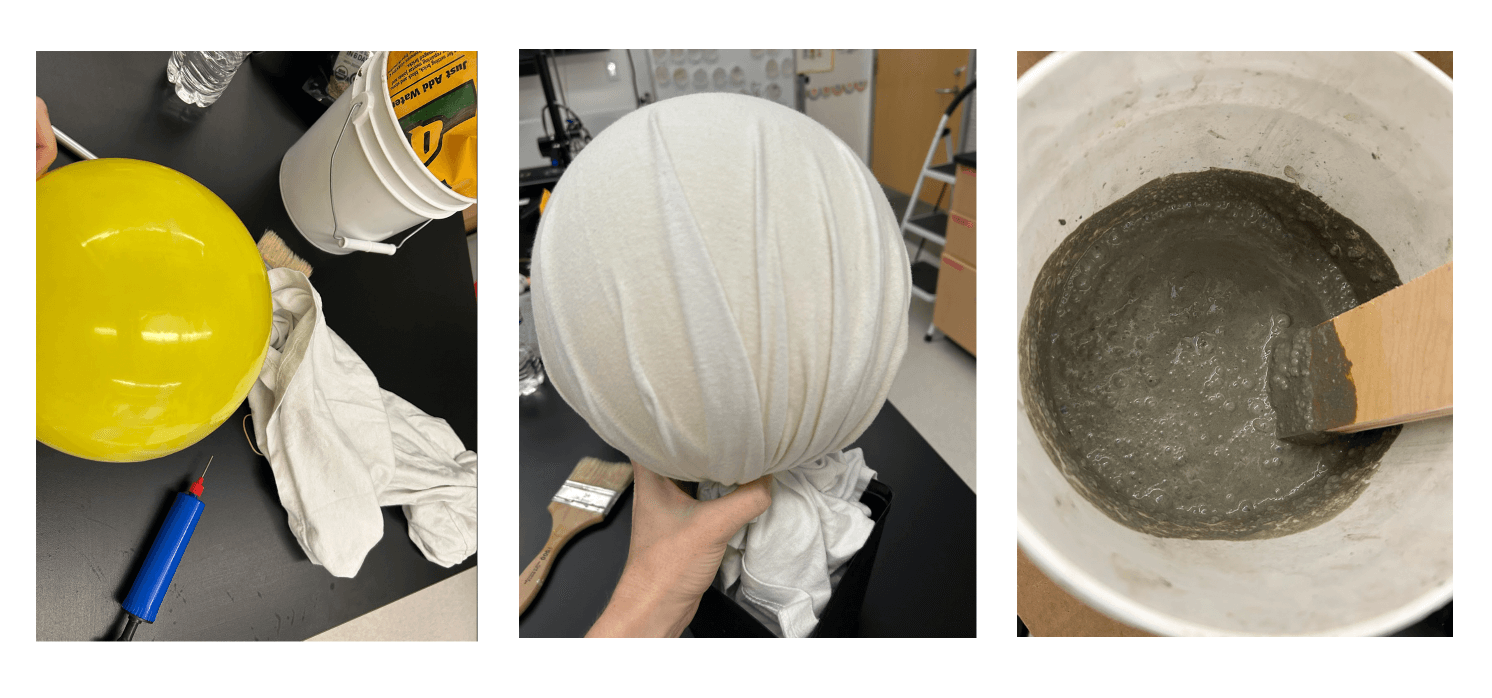 Figure 1. Fabric and concrete sculpture setup. Set up included inflatable balls, old t-shirt for the fabric, Quickrete mix, and a couple of buckets.
Figure 1. Fabric and concrete sculpture setup. Set up included inflatable balls, old t-shirt for the fabric, Quickrete mix, and a couple of buckets.
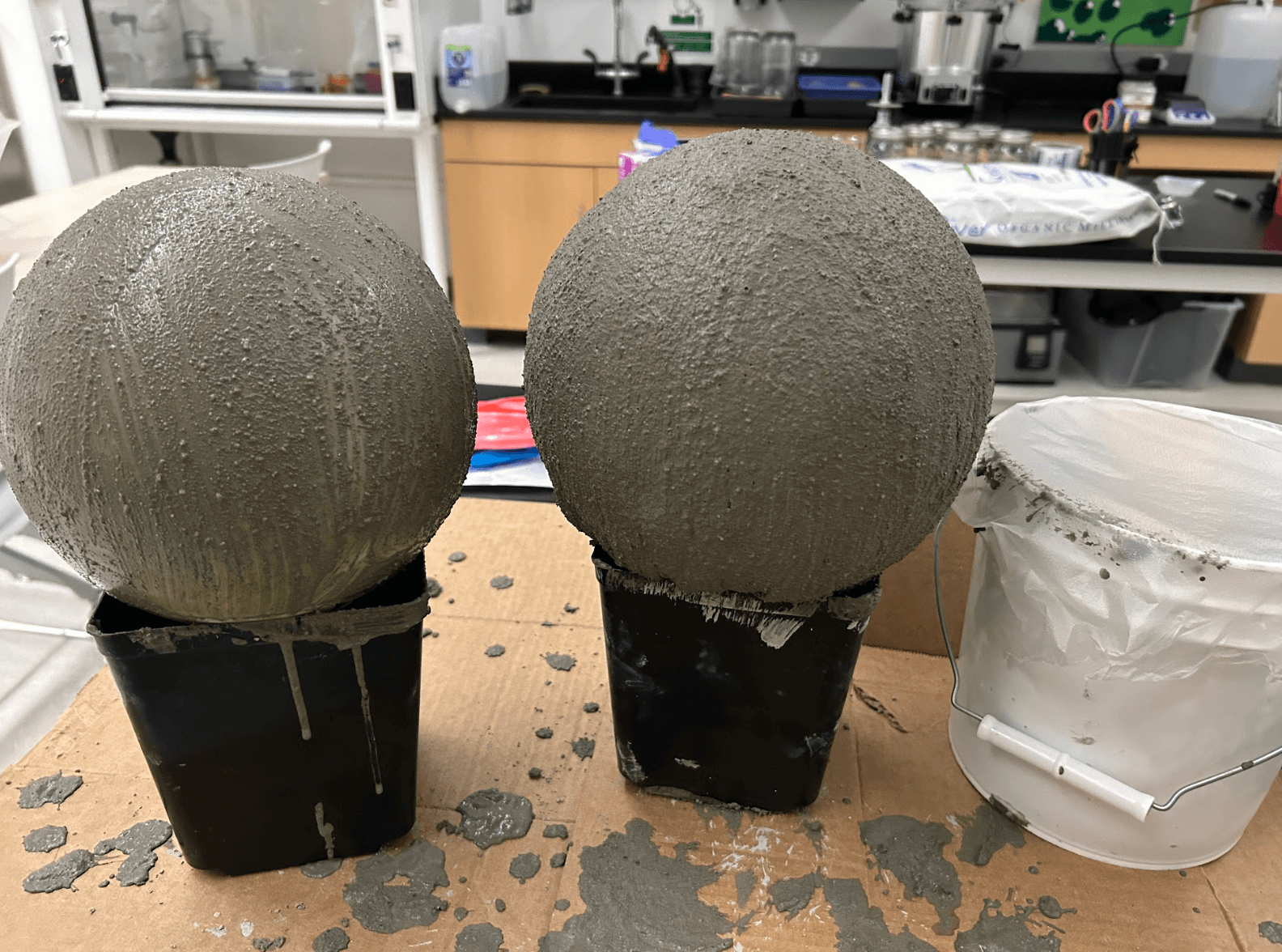 Figure 2. Concrete spheres drying. Concrete spheres were left over night to dry.
Figure 2. Concrete spheres drying. Concrete spheres were left over night to dry.
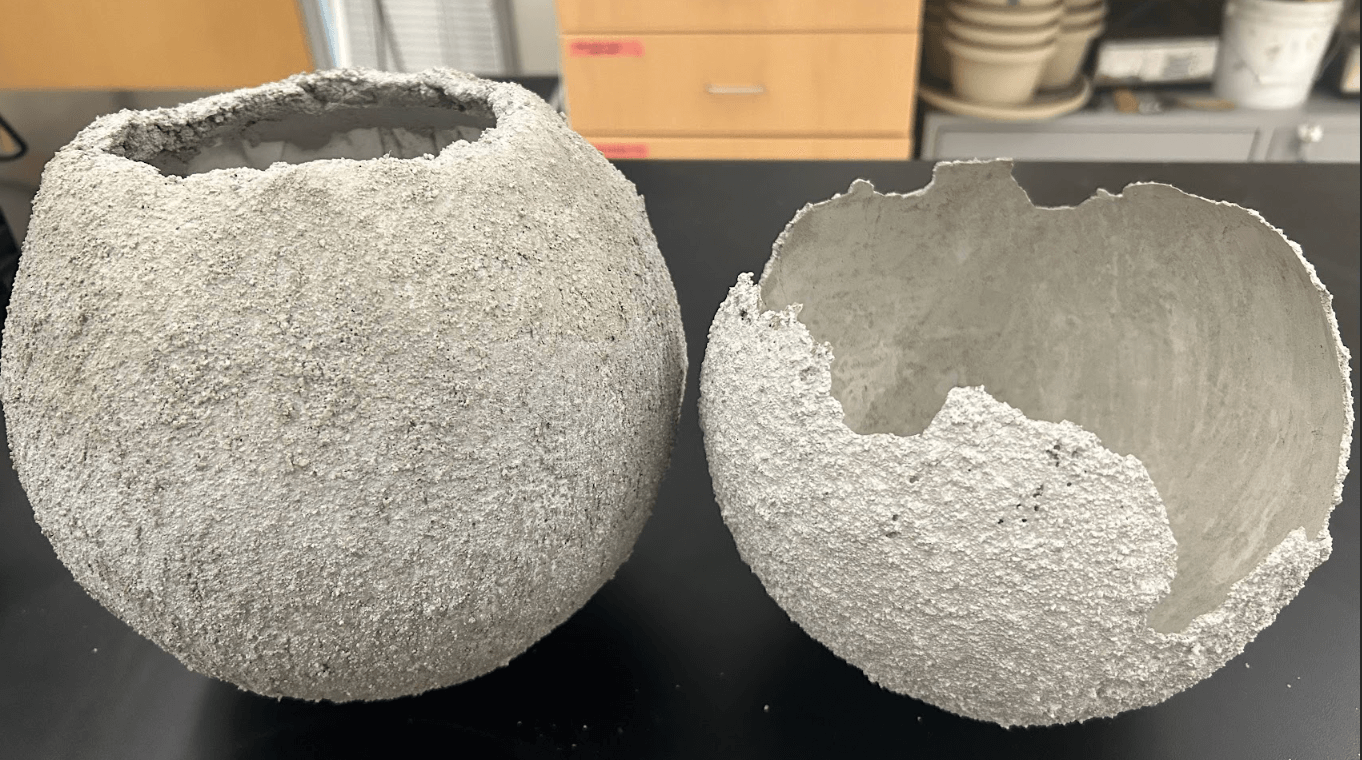 Figure 3. Final spheres. I purposefully left the one sphere partially broken for a more abstract look. I also did not use fabric for the base of that one.
Figure 3. Final spheres. I purposefully left the one sphere partially broken for a more abstract look. I also did not use fabric for the base of that one.
Agar and Roots¶
 Figure 1. Growth of wheatgrass. Wheatgrass seeds were placed on top of 2% agar in a petri dish. These images show the progression of growth from seeds to grass. The wheatgrass was allowed to grow for two weeks.
Figure 1. Growth of wheatgrass. Wheatgrass seeds were placed on top of 2% agar in a petri dish. These images show the progression of growth from seeds to grass. The wheatgrass was allowed to grow for two weeks.
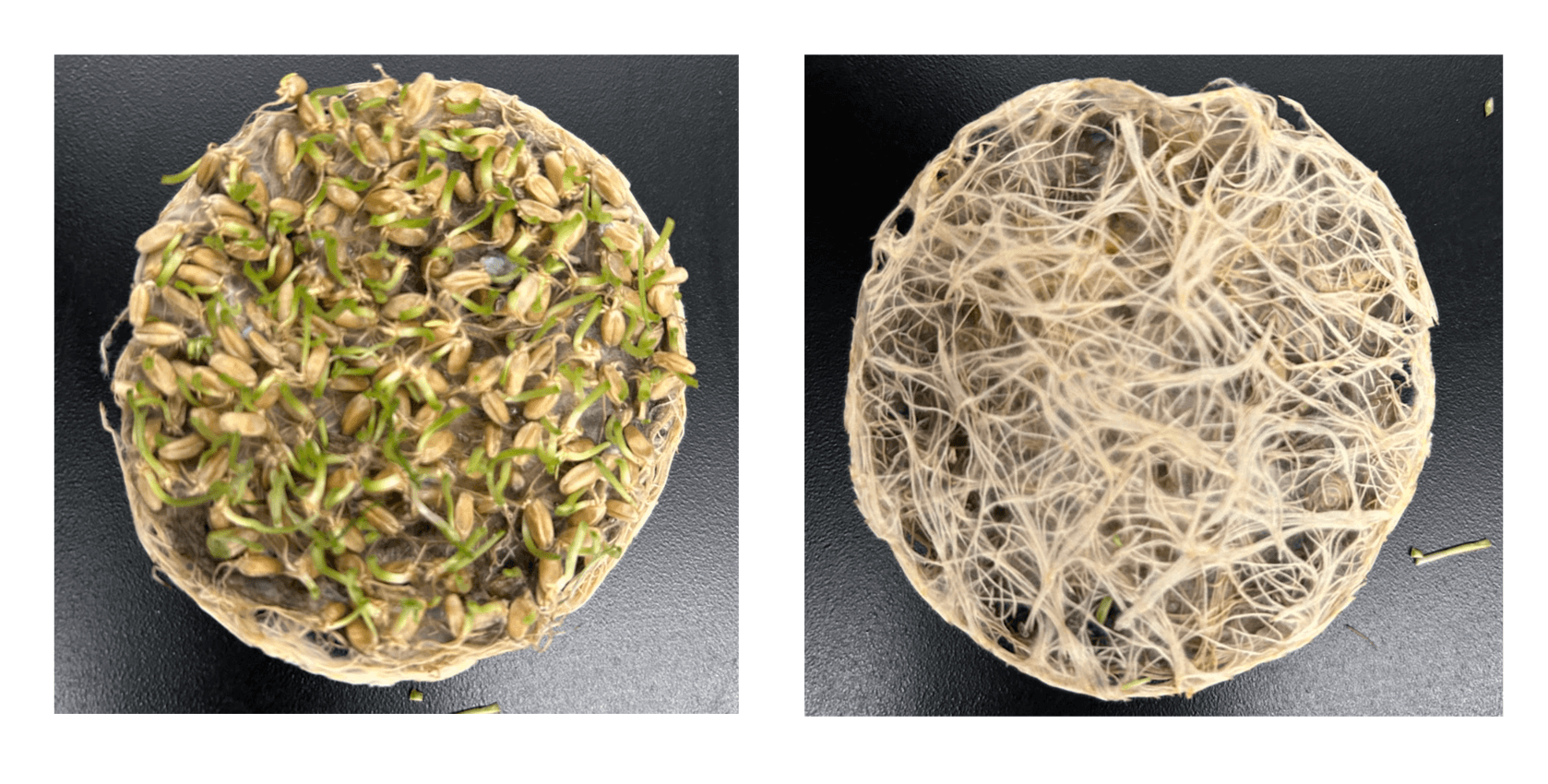 Figure 2. Final wheatgrass/agar biocomposite. Wheatgrass roots sprouted through the agar and started twisting around the bottom of the petri dish. I cut off the tops of the grass. The seeds were too difficult to separate from the layer of agar. Also the agar showed some mold growth.
Figure 2. Final wheatgrass/agar biocomposite. Wheatgrass roots sprouted through the agar and started twisting around the bottom of the petri dish. I cut off the tops of the grass. The seeds were too difficult to separate from the layer of agar. Also the agar showed some mold growth.
Silk and Sculpture¶
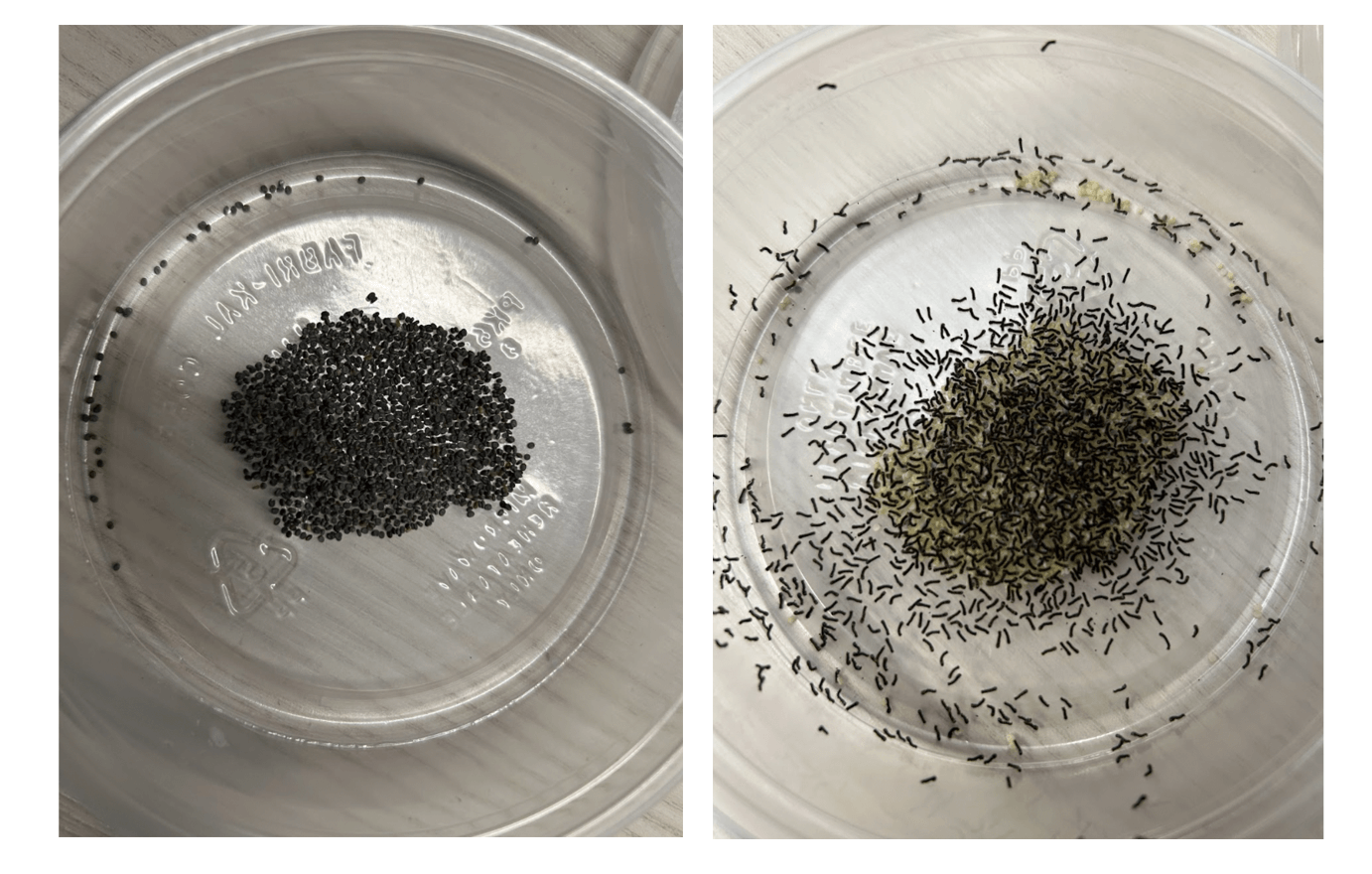 Figure 1. Silkworm babies! On the left are the silk worm eggs and on the right are the newly hatched larva!
Figure 1. Silkworm babies! On the left are the silk worm eggs and on the right are the newly hatched larva!
 Figure 2. Silkworm larva I also purchased some mature larva (2nd and 3rd instar) for the project.
Figure 2. Silkworm larva I also purchased some mature larva (2nd and 3rd instar) for the project.
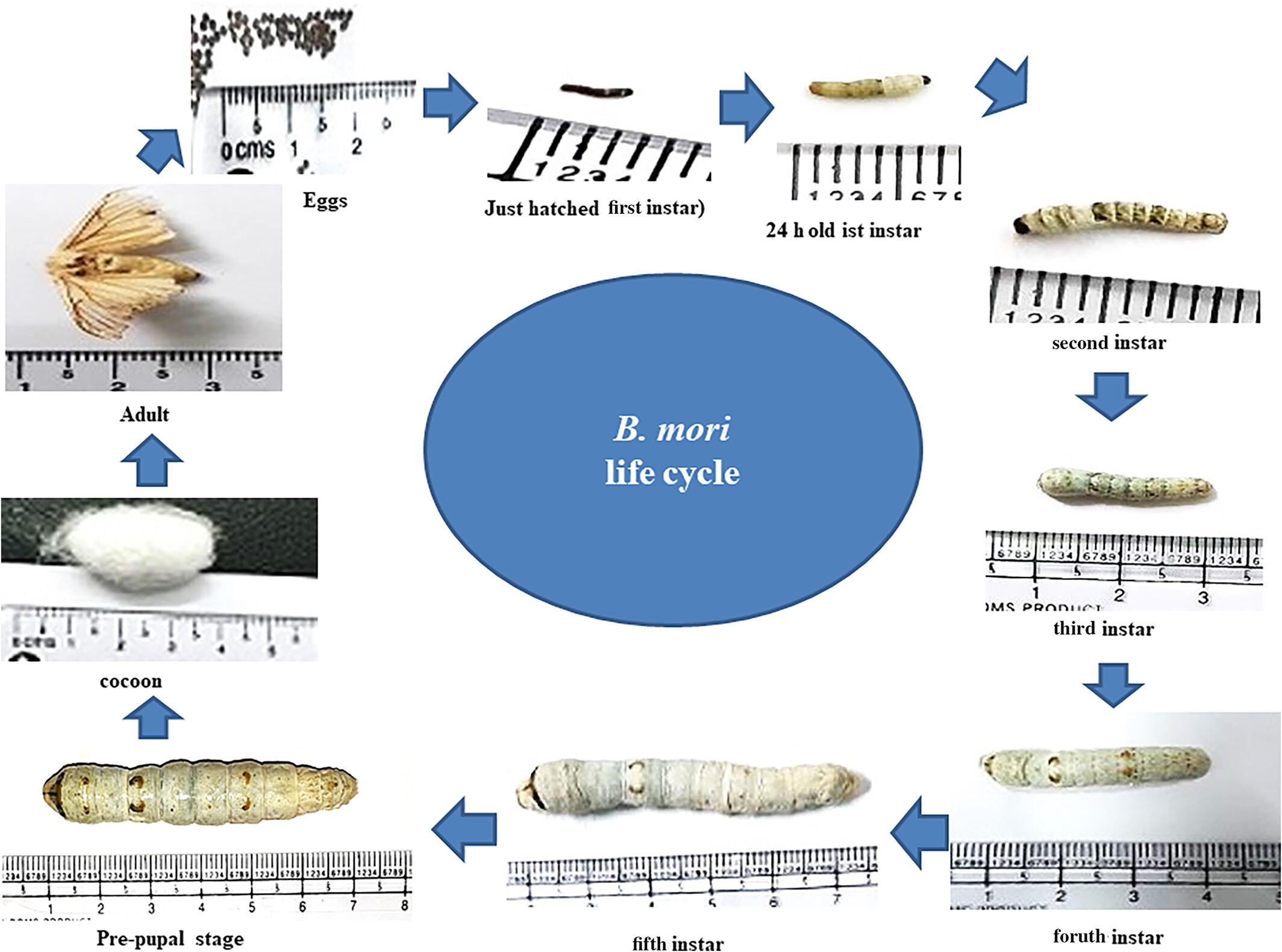 Figure 3. Silkworm (Bombyx mori) life cycle. This image was taken from the Silkworm Bombyx mori as a model organism: A review.
Figure 3. Silkworm (Bombyx mori) life cycle. This image was taken from the Silkworm Bombyx mori as a model organism: A review.
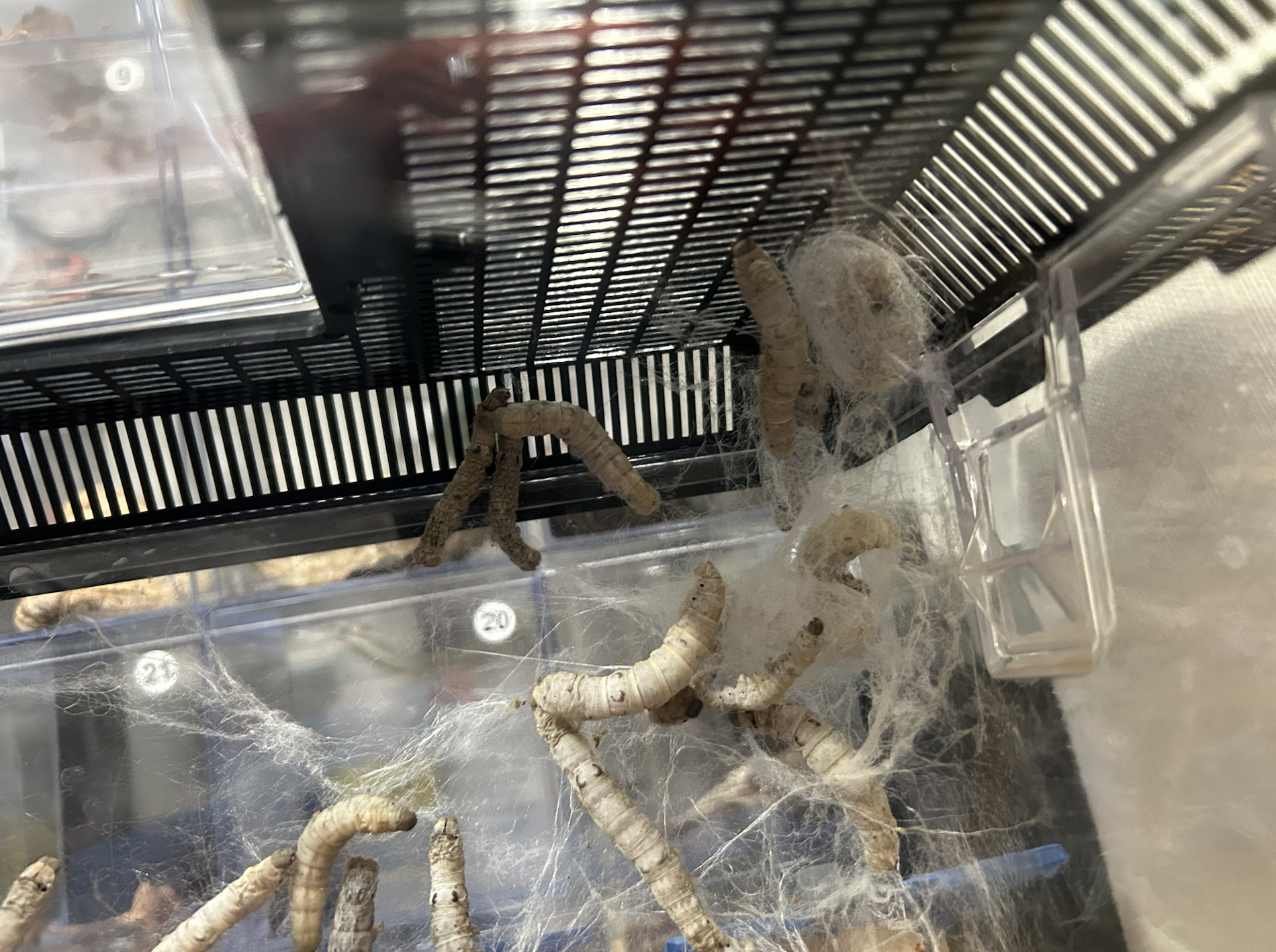 Figure 4. Silkworms making silk. The silkworms spun silk inside of their cage.
Figure 4. Silkworms making silk. The silkworms spun silk inside of their cage.
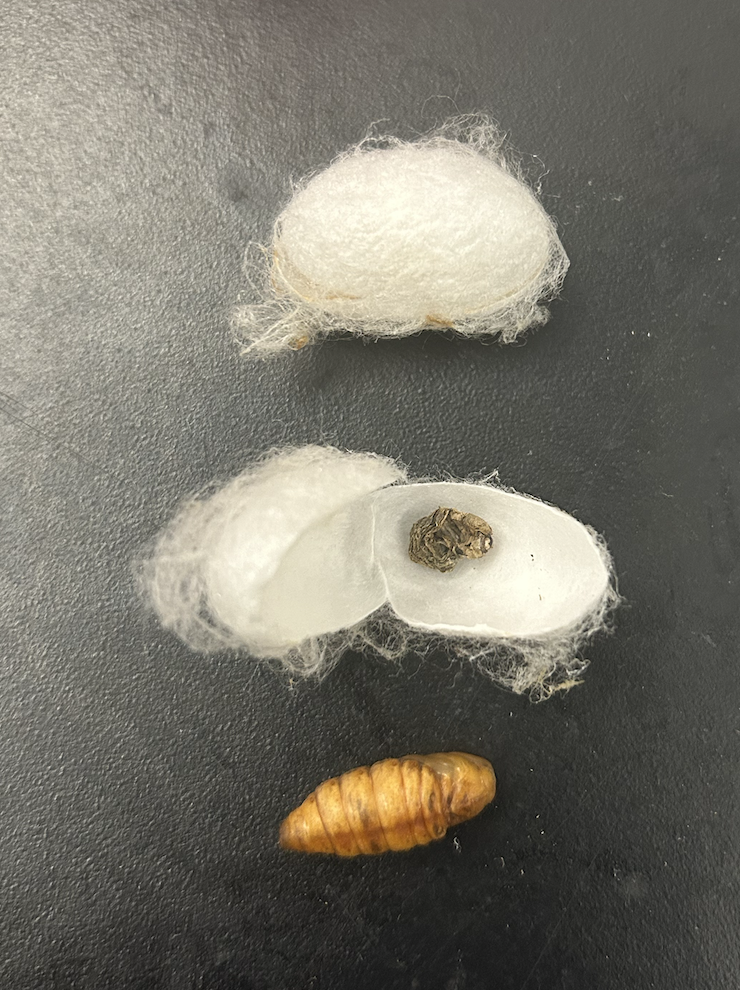 Figure 5. Silkworm cocoons. Silkworms spun cocoons. I dissected a couple of them to see the full structure. There were two layers: the outer layer was soft and silky and the second layer was hard. Within the cocoon there was a chrysalis as shown on the bottom.
Figure 5. Silkworm cocoons. Silkworms spun cocoons. I dissected a couple of them to see the full structure. There were two layers: the outer layer was soft and silky and the second layer was hard. Within the cocoon there was a chrysalis as shown on the bottom.
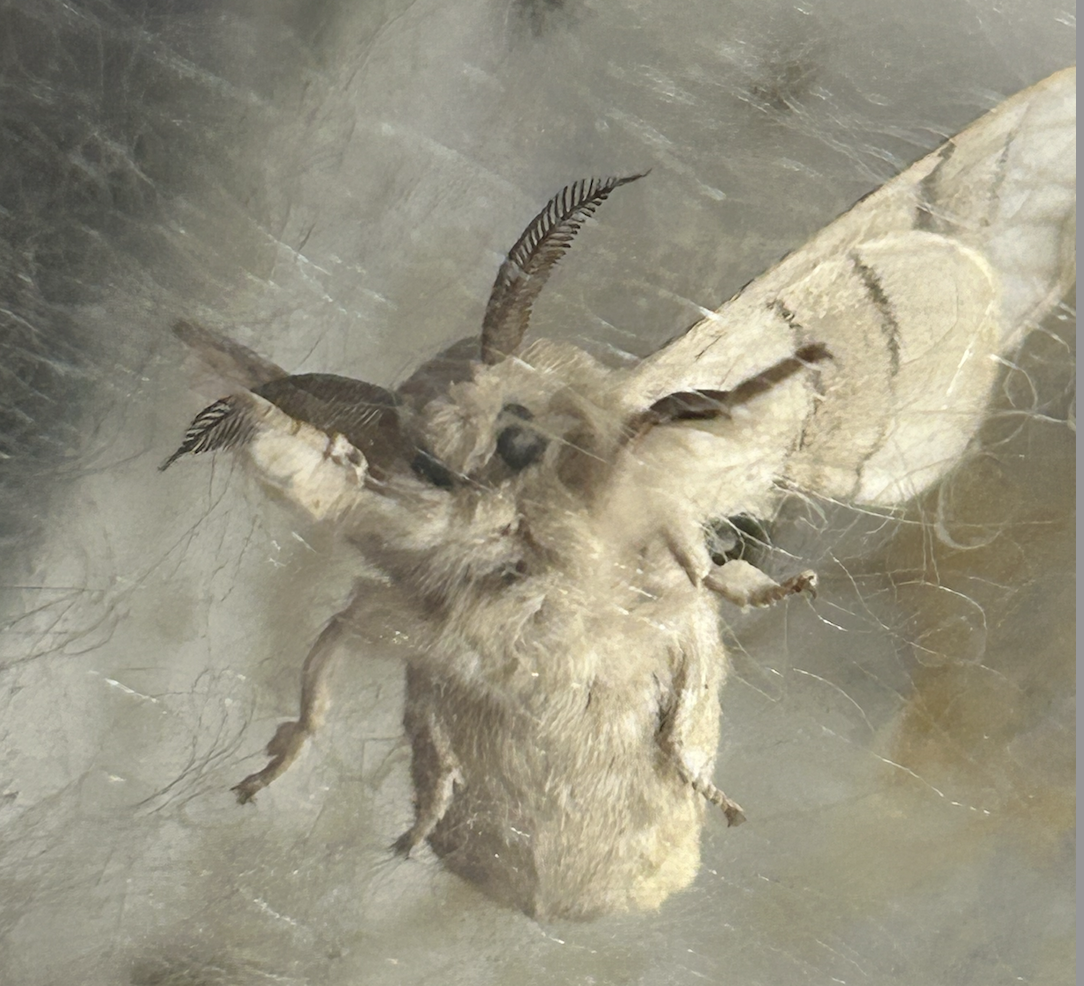 Figure 6. Bombyx mori moth. Bombyx mori moths are used as a model organism in science. If I were to continue this project in the future I would want to use the moth for educational purposes such as teaching genetics or nervous system development.
Figure 6. Bombyx mori moth. Bombyx mori moths are used as a model organism in science. If I were to continue this project in the future I would want to use the moth for educational purposes such as teaching genetics or nervous system development.
With the silkworm project I spent the vast majority of the time learning to take care of these animals rather than attempting to use their silk to make a sculpture myself. Instead, one of my students decided to try it our for their bioart project as discussed below.
Discussion¶
Fabric and Concrete¶
I tested covering the plastic ball with and without fabric. I found that using the fabric helped create a rough surface on which the concrete was able to stick to as compared to the smooth surface of the ball. If I were to do this again I would try using a finer concrete mix (or cement).
Agar and Roots¶
The agar developed some black mold over the course of the two weeks of growth. Next time, I would layer the setup differently. The top layer would be 2% agar, the middle layer would be mesh, and the bottom layer would be soil. I imagine that with this layering system, the roots would be more easily detached from the agar and seeds above thus removing the mold issue.
The agar and roots project inspired students Canada C. ('24) and Steven C. T. ('24) to experiment with growing wheat grass out of wool as shown below. You can also learn more about their Biaort project and how it connects to the Living BioLibrary here.
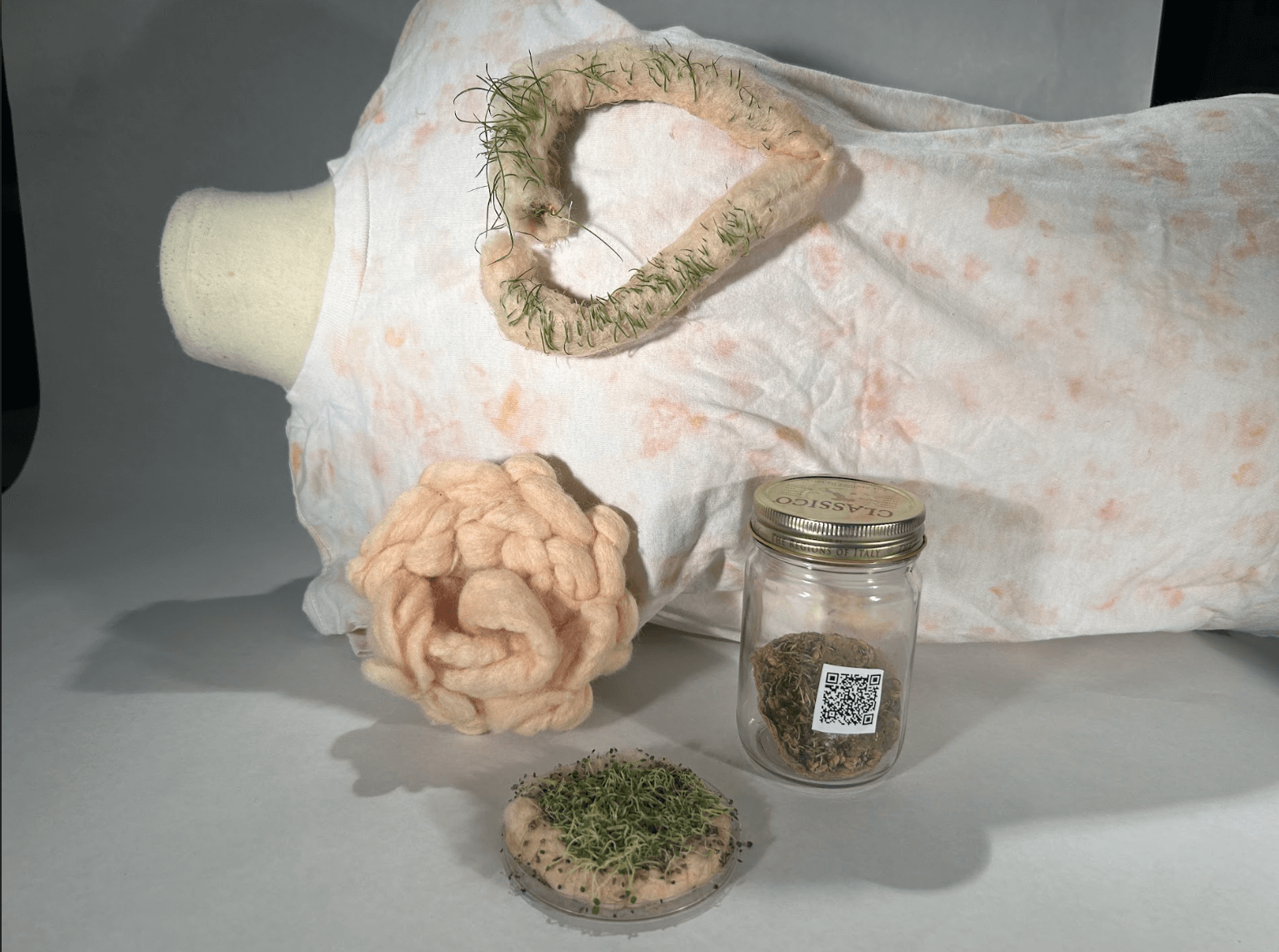
Silk and Sculpture¶
Working with silk worms was a lot more work than I had imagined. They require specialized food and require daily cleaning of their cage. Now that I have more knowledge on how to raise the silk worms from eggs, I might return to this project next year and have more success. We were able to fully raise the silkworms from eggs to moths. The silkworms spun silk in their cage but we were unsucessful at getting them to spin a large quantity outside of that environment. I am unsure why this was. Perhaps they need more access to food sources. Or we chose the wrong instar larva for the job.
The silkworms project inspired student Jeremy R ('25) to experiment with making silk scupltures using the silkworms as shown below. You can also learn more about their Biaort project and how it connects to the Living BioLibrary here.

Materials and Methods¶
Fabric and Concrete¶
- Quikrete
- Plastic balls
- Old t-shirts
Agar and Roots¶
- Agar agar
- Wheat grass